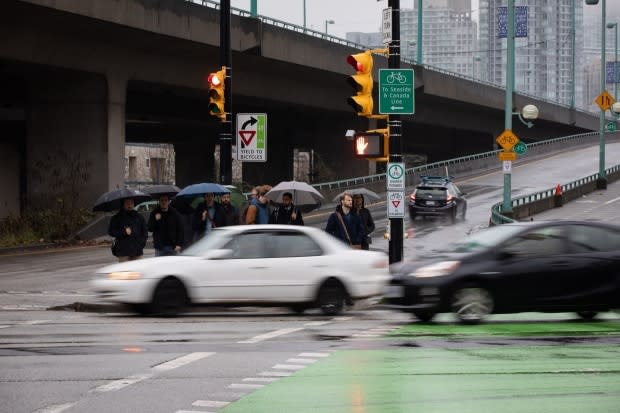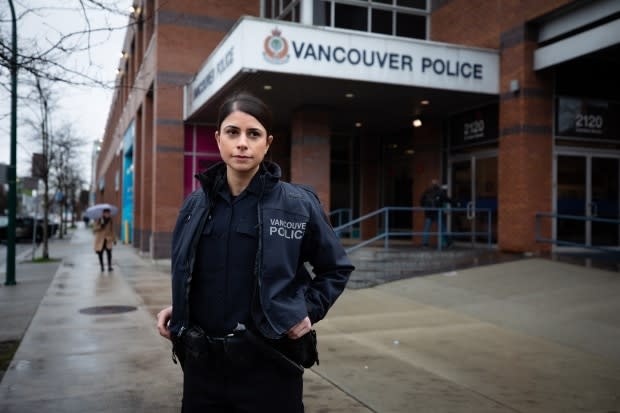VPD urges all road users to 'slow down ... be cognizant of each other' to reduce pedestrian injuries
Vancouver police say they are doing the best they can to keep people safe at city intersections, following the release of data by ICBC highlighting the most dangerous roads for pedestrians in the city.
"We can't be at every intersection," said Const. Tania Visintin on CBC's The Early Edition, pointing people to the resources the Vancouver Police Department has online where they can read up about how to keep themselves safe.
Darkness and wet weather at this time of year in particular can make it more dangerous for pedestrians and Visintin said while there are plans for seasonal road blocks to nab impaired drivers, there are no plans to increase enforcement "specific to pedestrians" at intersections where poor driver behaviour can be fatal.
"Everybody just needs to slow down and really be cognisant of each other and know that police are out there and we will take action when we do see it," Visintin told The Early Edition host Stephen Quinn.
The most dangerous place in the province to cross on foot, according to ICBC data from 2013 to 2017, is the intersection at Main and East Hastings streets, where 35 collisions in that time resulted in injury or fatality.
There are 17 other crossings in the city where 10 or more crashes occurred during that time frame.
Experts say action must be taken to improve road safety at dangerous intersections before more lives are lost.

Visintin said police are trying to keep everyone on the road safe and will crack down when they see anyone violating the rules of the road. But, she said, police do not have the manpower to be everywhere and it is up to people to educate themselves, and be aware of their surroundings, whether they are a driver, cyclist or pedestrian.
"It's a big city. We have so much on the go and we do the best we can with the resources we have," said Visintin.
Kay Teschke, a professor emeritus at UBC's School of Population and Public Health, says education only goes so far.
"The emphasis on education is really disappointing from a whole road safety point of view," she said. "It's one of the least effective ways to make our roads safer."
Instead, she wants to see systematic change in terms of how the roads are set up, with no right-hand turns on red lights and separate light phases for pedestrians and cyclists crossing intersections.
"We are forced to cross when people are trying to turn left and turn right," Teschke said.
"Everyone is annoyed at everyone and it's a huge design problem."
Raheem Dilgir, director of the Canadian Association of Road Safety Professionals, says enforcement could be expanded but automated methods can help make crossings safer.
"Safety cameras that are in place at many intersections in Metro Vancouver are intended to do just that," said Dilgir on The Early Edition.
"Given the fact that police resources are limited, I think our reliance on these automated methods will likely increase."

To hear Stephen Quinn speak with Const. Tania Visintin about pedestrian safety, tap the audio link below:

